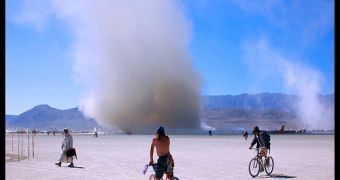You would normally expect everybody to consider a tornado warning coming from the US National Weather Service, but a research carried out by Bob Drost, a doctoral student at Michigan State University, shows that 37% of people hearing a tornado warning do not fully understand the severity of the statement.
As big storms are hitting the Midwest, Drost, who works in MSU's Geocognition Research Laboratory, hopes that people will let go of their bad habits and start paying attention to the severe weather and tornado warnings.
Hope is the key in Drost's case, because according to his research, “only 63 percent [of people] understood that a warning is the most urgent National Weather Service statement during severe weather,” while the others simply ignored it.
His study divided people into two categories: those who have experienced tornadoes and those who have not, and only gathered information from TV, the Internet, books or family and friends.
People with episodic experience (those who witnessed tornadoes firsthand) have a lower general tendency of reacting to a tornado warning than those who have a semantic experience of tornadoes.
He explained that “there's a phenomenon associated with how people react and act to severe storm and tornado warnings [and] much of it is based on people's prior experience with severe weather.
“It's comparable to biting into an apple with a worm in it; eating part of a worm will affect how you decide about eating apples for the rest of your life.”
But what surprised Drost was the high percentage of people who did not realize the severity of a tornado warning.
Drost experienced the strength of storms firsthand and even if he admits being drawn to big weather, he says that hopefully, his study will improve the National Weather Service's storm warning system as well as the way that people react to it.
He is “planning on continuing the research on this topic.
“By working with the scientists and policymakers at organizations like the National Weather Service and National Oceanic and Atmospheric Administration, I'm hoping to find better methods based on social, scientific and cognitive research that will cause people to react appropriately to storm and tornado warnings.”
His research will be presented next week, at the Geological Society of America's annual conference.

 14 DAY TRIAL //
14 DAY TRIAL //